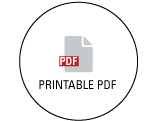The first segment showed that the daily oral administration of the NS to birds between 7 to 14 days of age at the 2X dose-level (320 mg/kg body weight or 48.8 mg/ml/bird) resulted in a consistent and significant improvement in the feed conversion (P<0.05) at 10 and 14 days of age, associated with a significant (P<0.05) increase in the liver weight index. In addition, the administration of NS at 2X level resulted in complete absence of toxicity signs (swollen infraorbital sinuses, ocular exudate, nasal discharge, thick oral saliva, diarrhoea, lameness and huddling) and complete absence of toxicity lesions (airsacculitis, hydropericardium signs, pericarditis, perihepatitis, splenomegaly and tracheitis). The four groups of birds that received levels 1X to 4X levels had significantly higher frequency of birds with gaseous caeca compared to the control group deprived of NS (P<0.05), a sign of higher fermentation activity in this organ. Data from the second segment of this research showed that the daily administration of NS at a level of 48.8 mg/ml/bird, between 7 to 14 days of age, to H9N2-challenged birds reduced specific pathological effects at 14 days of age namely: absence of rales at 3 days post H9N2 challenge and gross lesions (absence of tracheitis and enteritis at 7 days post challenge). Such reductions in signs and gross lesions were associated with a 63.4% reduction in immune responses to the hemagglutinin protein of the AIV, an indication that NS has a reducing effect on the viral infectivity in chickens.
Key Words:
Avian influenza, Chickens, Immunomodulation, Nutrient synergy, Viruses.
Full Study:
